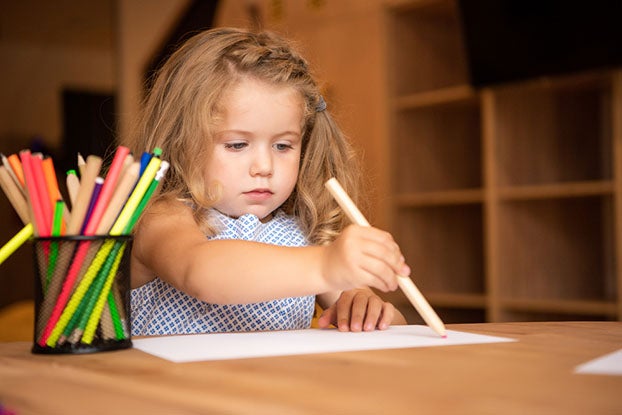Teaching children about their feelings can be challenging. That’s because feelings themselves are complicated. Although emotions for kids can be an abstract concept, understanding emotions is an essential part of growth and development.
In this article, we’ll dive into the reasons why children need to understand their emotions. We’ll also share some effective strategies you can implement to help your child learn how to manage their feelings well.
Table Of Contents
- The Challenge With Emotions For Kids
- Why Do Kids Need To Manage Their Emotions?
- 9 Ways To Help Kids Understand Their Feelings
- Emotions For Kids: Simple Activities
The Challenge With Emotions For Kids

Kids experience the same emotions as adults. They get angry, frustrated, sad, scared, excited, jealous, worried, and so on. Unfortunately, children usually don’t have the vocabulary to express their emotions clearly.
Because of where they are in their development, they express feelings through their facial expressions, body language, or in how they play. They might even act out (e.g., throwing a tantrum, hitting, biting) when the emotions get overwhelming.
It’s important to note that while throwing a tantrum can be frustrating for a parent, it’s actually perfectly normal for young children.
We can’t promise that your child will never again have a tantrum or become disappointed, angry, or sad about something. In fact, we are sure they will. But we can promise that better understanding emotions and how to express them allows children to successfully address what they are feeling and why.
These social-emotional skills are part of your child’s character, one of the 5 C’s at the heart of the Begin Approach to helping kids succeed in school and life. Along with Core Skills, Creativity, Critical Thinking, and Curiosity, Character plays a crucial role in a child’s overall well-being.
Let’s look at why it’s so important for children to manage their emotions.
Why Do Kids Need To Manage Their Emotions?
It’s normal for children to experience different emotions, but learning to manage those feelings can benefit kids in many ways. Let’s take a look.
1) Stronger Coping Skills

Strong emotions such as frustration, anger, or even disappointment can be challenging for anyone (including adults) to deal with. But these are a part of life, and, unfortunately, we can’t shield our children from experiencing these feelings.
As parents, the best thing we can do is help our children learn to recognize and express their emotions in healthy ways. When they can do this, it gives them the ability to cope in different, challenging situations.
In fact, with the right tools, they can bounce back more easily after experiencing complex feelings. They also learn to avoid destructive behavior (e.g., hurting others or themselves).
2) More Stable Relationships
When children can express their feelings in a healthy way, it gives them a better chance of making friends and having more stable relationships.
For example, let’s say your child has a friend who always borrows their toys during playtime and never returns them. Many children might start a fight, cry, or even physically grab the toys to get them back.
Teaching your child to express how they feel might yield better results for everyone involved and prevent arguments.
3) Better Experience In School

A child’s school years can be some of the most emotionally challenging years of their life. They’ll make friends and lose friends, do well in some classes and not great in others. And then enter into the teen years, full of emotions and raging hormones.
With all of these highs and lows, helping your child understand and effectively communicate their emotions from early childhood can give them a better overall experience in school.
4) Self-Awareness
Expressing emotions doesn’t always have to be an outward experience (i.e., speaking to someone or yelling into a pillow). Sometimes, we can process our emotions inside our heads.
For example, instead of getting mad at someone for their actions towards us, we can forget about who we’re angry at, what they did or said, and just focus on what we’re feeling.
We can say to ourselves, I’m so angry right now, and that’s OK. These simple words can help get rid of the power of that emotion. They can also ease anxiety and allow us to see the problem in a new light.
While it might take time for children to reach this point of self-awareness, introducing this technique early will put them on the right track to understanding their feelings. It will also loosen the grip that emotions can have.
5) Improved Family Life

If you have multiple children, you know that it can be challenging for them to get along. Perhaps they will not be best friends overnight, but helping children understand their feelings and express them in healthy ways can lead to less stressful family life.
6) Increased Empathy
Kids who understand and can express their emotions are often more emphatic toward others. They can better identify how someone else might feel and respond appropriately, whether by offering comfort or giving space.
This social-emotional skill will help them value differing perspectives and build healthier relationships.
7) Better Decision-Making Ability
When your child is overwhelmed with emotions, it can cloud their judgment and lead to impulsive decisions or actions. They can make more rational decisions when they learn to recognize and manage their feelings instead of being controlled by them.
This skill will serve them well as they grow and face increasingly complex decisions.
9 Ways To Help Kids Understand Their Feelings
Now that you understand some of the incredible benefits of teaching children about emotions, let’s get into some effective strategies you can try at home today.
1) Give It A Name

The first step in helping your child understand and identify their different emotions is to give those emotions names. This allows children to start developing an emotional vocabulary that they can use to express themselves.
For preschoolers, you can teach basic feeling words, like mad, happy, scared, and sad. Once a child gets older, you can introduce more complex feeling words, like disappointed, frustrated, and nervous.
The Match and Imagine Feelings Cards from the Learn with Sesame Street by Begin subscription are an excellent resource for this step. You can use them to play games like charades or memory to help your young children better understand each emotion.
2) Respond With Empathy And Validation
When our children come to us with their hurt feelings, it’s easy to try to quickly “fix” the situation so that they are no longer hurting.
While this might be a natural instinct for many of us, the most effective first response is to respond with empathy and validate their feelings.
For example:
You are mad because you want to eat another cookie right now. I understand.
Timothy didn’t want to share his toy with you, and this made you sad. I understand.
These simple responses will help a child feel heard, understood, and not judged. It might also encourage them to continue using their emotional vocabulary instead of immediately acting out.
3) Teach Coping Strategies
After expressing their emotions verbally, children might still feel the need to act out (i.e., hit someone). But it’s essential to teach them to deal with uncomfortable emotions in a more productive way.
There are multiple effective calming strategies for kids. And helping children know that there’s an alternative to throwing tantrums or exhibiting attention-seeking behavior allows them to deal with their emotions better.
However, if you wait until your child is upset to brainstorm ways to calm down, they likely won’t be interested in trying anything. That’s why it’s essential to introduce coping strategies before your child needs them.
One day, when they’re calm, sit together and list a few things they enjoy and could try doing when they’re upset. Encourage them to pick a few options and practice using them daily so they become second nature.
For example, you can encourage your child to take a self-timeout. Essentially, they can go to a quiet spot and calm themselves down.
If they love to draw, you can also have some drawing supplies ready for them to use to express themselves artistically. Sometimes even a quick walk outside does the trick!
4) Talk About Your Feelings

If you want to encourage your child to talk freely about their feelings, you, your partner, and everyone else around the house must do the same thing.
For example:
My friend isn’t feeling well, and that makes me sad.
Someone bumped my car while it was parked. This made me really angry.
This can be challenging because, as adults, we don’t always feel comfortable sharing our feelings with children. We may not want to burden a child with our problems, or maybe we’re concerned about exposing the child to adult situations.
While it is true that some feelings are not appropriate to share, it’s also true that when we talk about our emotions, we give children permission to do the same. Modeling emotions for kids in this way can help them get comfortable sharing how they feel with others.
5) Read About It
Sometimes reading books about characters dealing with the same emotions we are dealing with gives us a new perspective.
Here are a few great books to help your child understand their complex feelings:
- Grumpy Monkey
- Ruby Finds a Worry
- In My Heart: A Book of Feelings
- The Boy With Big, Big Feelings
- The Color Monster: A Story About Emotions
While reading these types of books, remember to discuss how the characters may feel. At appropriate times, pause and ask, How do you think she is feeling right now? Why?
6) Encourage And Praise
Remember to praise your child for expressing their emotions — even if you have to guide them a bit to finding the best ways to act on those feelings.
Let them see that they are not bad for feeling jealous of their friend who has a toy they want. And that it’s OK to feel mad, sad, happy, frustrated, and everything else in-between. The important thing is to express how they feel in a healthy way.
7) Model Self-Regulation
As your child’s role model, it’s crucial to practice self-regulation when dealing with your own emotions. If you can’t handle big feelings in a calm, productive manner, how can you expect your child to do so?
Take deep breaths, use positive self-talk, and take breaks when needed to regulate your emotions. If you’re feeling frustrated, model healthy coping strategies for your child to see and learn from.
Verbalize this process to your child when appropriate. This shows your child that it’s normal to experience strong emotions and that there are healthy ways to manage them.
8) Subscribe To Learn With Sesame Street by Begin
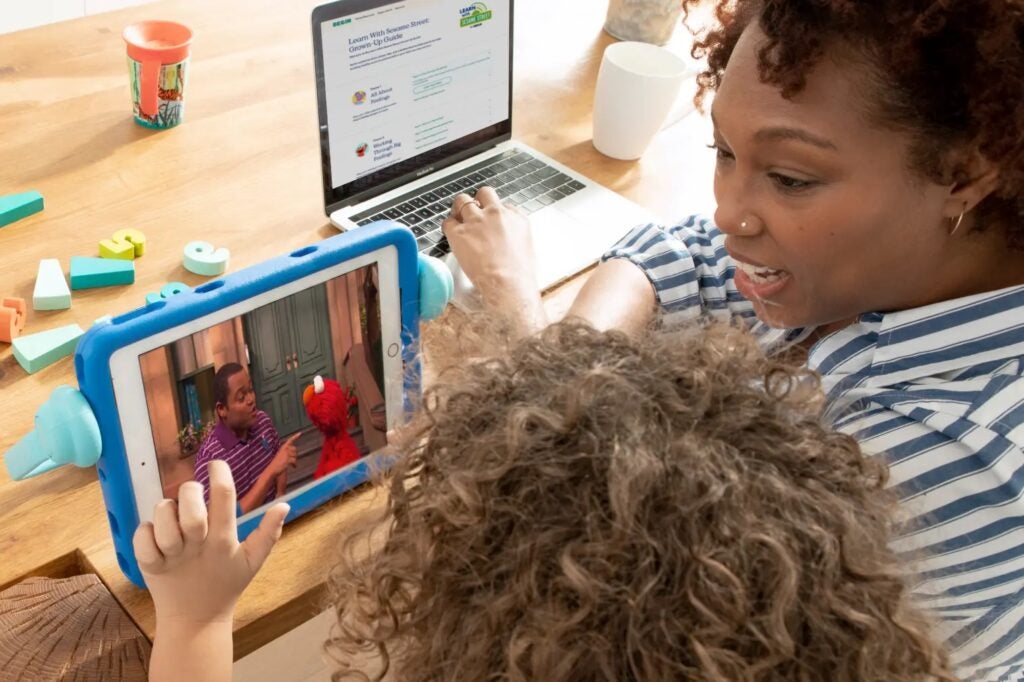
Learn with Sesame Street by Begin is an innovative subscription service that’ll help you teach social-emotional skills like:
- Expressing and managing feelings
- Awareness of others’ feelings
- Responding to emotions in others
- Connecting feelings to the body
Every month, your child will get a fun box filled with hands-on materials like games, books, and activities designed to support their emotional learning. Plus, they’ll have access to expert-designed classes to help them explore their feelings with their Sesame Street friends.
Learn with Sesame Street by Begin gives your child a solid foundation for developing social-emotional skills while creating an engaging learning environment. The included materials make it easy to weave these important skills into your child’s daily routine.
9) Seek Professional Help When Needed
Sometimes, despite your best efforts to support your child through emotional challenges, they may need additional help.
If your child regularly struggles to cope with overwhelming emotions, has behavioral issues, or experiences significant life changes, it may be time to seek the guidance of a mental health professional.
A therapist or counselor can provide your child with additional tools and strategies to manage their emotions in a healthy way. They can also work with you as a parent to better understand your child’s needs and give you ways to support them.
Remember that seeking help is not a sign of failure or weakness but a courageous step toward promoting your child’s emotional well-being and happiness.
And don’t forget to take care of yourself! It can be emotionally taxing to support a child through their big feelings, and it’s essential to prioritize your mental health as well. There’s no shame in seeking therapy or joining a support group for parents.
When you take care of yourself, you can better support your child’s emotional growth and development.
Emotions For Kids: Simple Activities
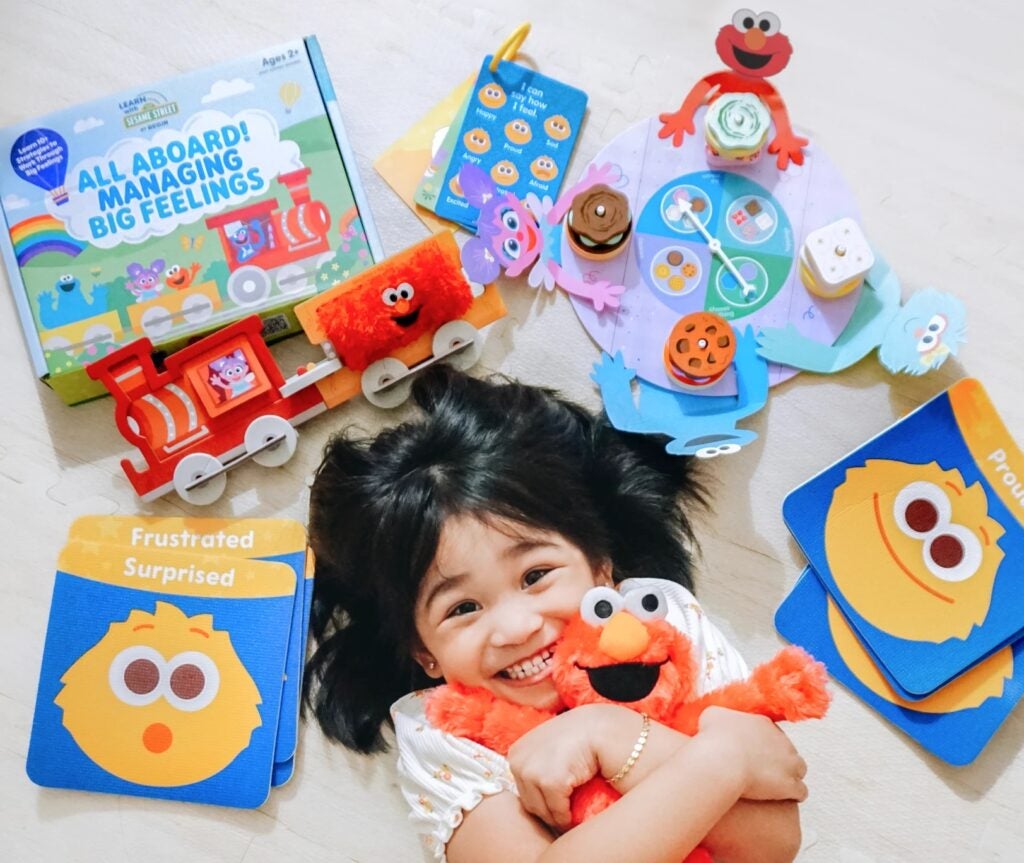
The above strategies can help you teach children about emotions and how to manage them. But it’s best to approach these lessons in a fun and interactive way.
Here are a few simple activities you can do with your child to help them learn about emotions.
Pause That Feeling
If you notice your child starting to show signs of a big feeling, pretend to hold a remote control and ask them to pause for a moment. Once they’re frozen in place, ask them to connect with their body and focus on how they feel.
At first, you may need to guide them by asking questions like:
- Do you feel warm anywhere?
- Are your muscles tight or relaxed?
- What does your heart sound like right now?
- Is there a place in your body that feels calm?
The goal is to help them recognize how their emotions affect them physically. This activity teaches them to listen to the clues their body sends them and recognize their feelings in a tangible way.
Connect Through Art
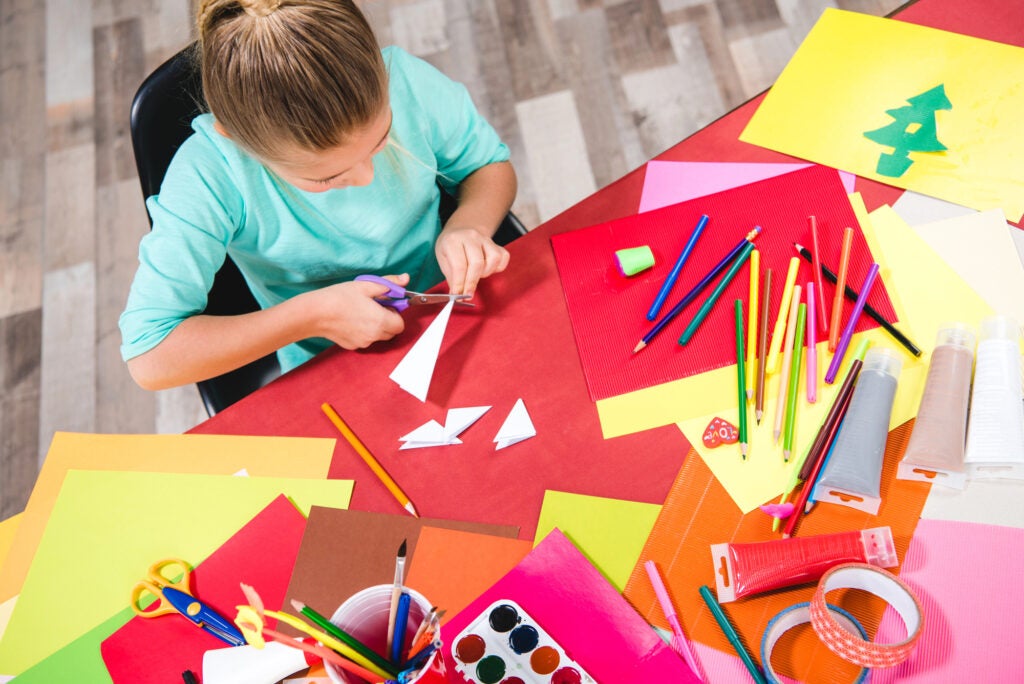
Art can be a powerful medium for understanding and expressing emotions. Encourage your child to use different craft supplies to create something that shows what they’re feeling inside.
You can even join in and create alongside them, using the opportunity to connect and open up a dialogue about their emotions.
You can ask questions like:
- What colors represent your feelings right now?
- Are you using dark or light shades?
- How do you feel when you look at this artwork?
Creating art together can strengthen your bond and provide a safe space for your child to express their emotions.
Practice Mindful Breathing Before Bed
When your child is upset, mindful breathing can help them calm down. By adding a few simple breathing exercises to their bedtime routine, you can help them practice this strategy so it becomes second nature.
You can try the 4-7-8 breathing exercise, where your child breathes in for 4 seconds, holds their breath for 7 seconds, and then exhales for 8 seconds. Doing this can help slow down racing thoughts and promote relaxation.
Another breathing exercise is the “balloon breath,” where they imagine blowing up a balloon as they inhale and slowly releasing the air as they exhale. This is good for younger children who may struggle to hold their breath or count while breathing.
Keep A Feelings Journal
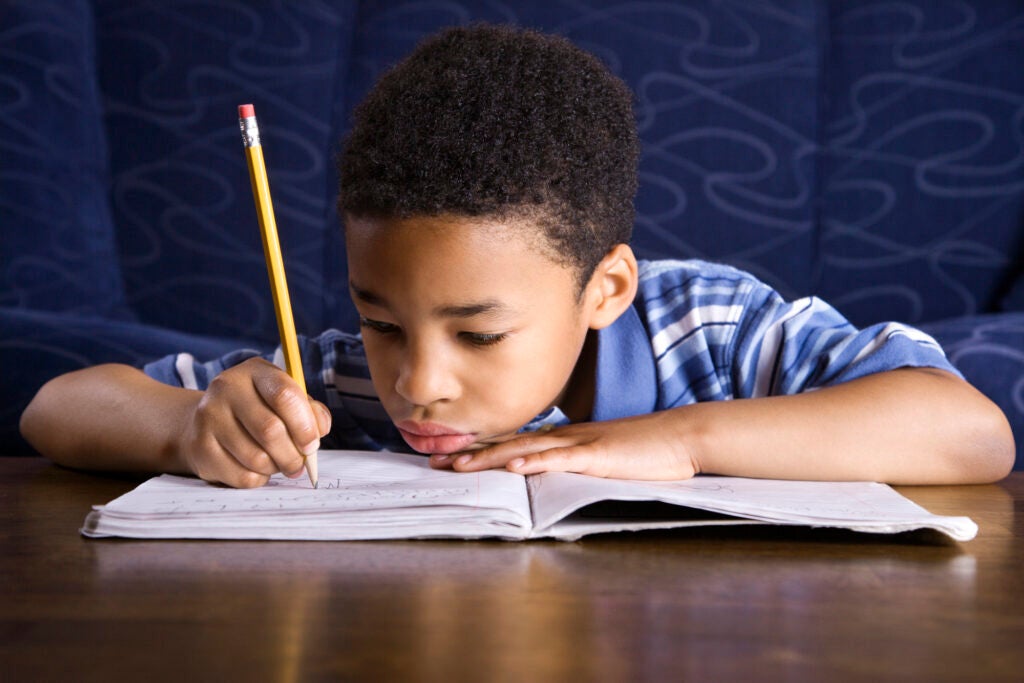
Give your child a journal or notebook for expressing their emotions. Younger children can draw a picture each evening to show their feelings, while older children can write down a few words or sentences about their thoughts and emotions.
Journaling helps some children better understand their emotions and track any patterns or triggers. It also allows them to safely express their feelings without fear of judgment.
Play Feelings Charades
Play a game of charades with your child, but instead of acting out a movie or book title, they can pretend to be different emotions.
Have them make faces or use body language to convey an emotion while you guess what it is. Then, switch roles and see if your child can guess what feeling you’re acting out.
If you’re looking for a challenge, here are some more complex emotions to try:
- Anxious
- Embarrassed
- Proud
- Confused
- Excited
- Curious
- Guilt
- Disgusted
Role Play Social Scenarios
Pretend play allows your child to explore and practice different social scenarios and emotions in a safe and controlled environment. You can use dolls or action figures to role-play different scenarios your child may encounter.
Here are some ideas:
- Dealing with conflict: Use role play to demonstrate how to handle disagreements with friends. Take turns playing both sides of a conflict, showing how to communicate feelings calmly and negotiate to work out differences.
- Expressing gratitude: Role-play situations where your child can practice saying thank you or showing appreciation to others.
- Managing disappointment: Act out scenarios where plans change or something goes wrong to help your child learn to manage disappointment and move forward.
- Controlling anger: Role-play events that may trigger anger or frustration, such as a sibling yanking a toy out of their hand or a classmate cutting in line. Then, explore different ways to cool down and handle the situation.
As you take turns playing different roles, your child will have the opportunity to experience different perspectives and emotions. This can help them develop their empathy as well as their emotional regulation.
Emotions For Kids: Practice Makes Progress

Feelings are complicated. And learning how to manage them can be challenging for young children. That’s why teaching emotions and modeling how to deal with big feelings is so important.
While teaching feelings to children might not be easy, it has incredible benefits: Kids develop stronger coping abilities, have better social skills, and learn to communicate effectively with others.
The strategies listed here give children the appropriate tools to understand their complicated emotions. However, when implementing these tips, take it one step at a time and be patient with your young learner. Use the games and activities to make the concepts fun.
In addition, continue to have conversations with your child about emotions throughout their childhood, including their teen years. This provides them with opportunities to get comfortable with different feelings and learn how to express them in healthy ways.
The Learn with Sesame Street by Begin app is an effective tool that helps kids learn and develop their social and emotional skills. With the help of their Sesame Street friends, kids learn how to express their emotions, empathize with others, and create healthy relationships.
Explore the Learn with Sesame Street by Begin app today and take our quiz to see which level is right for your child.




